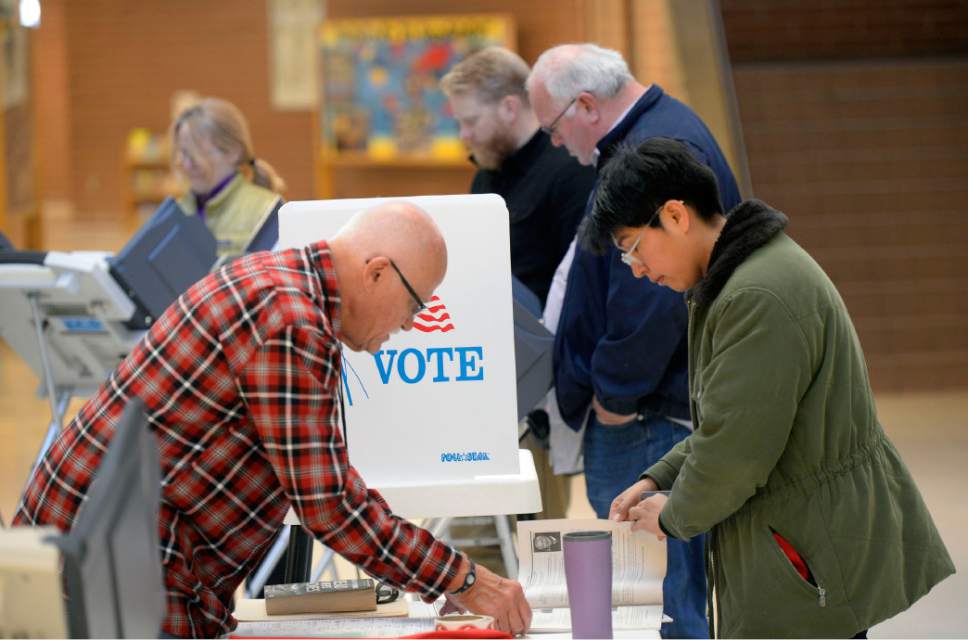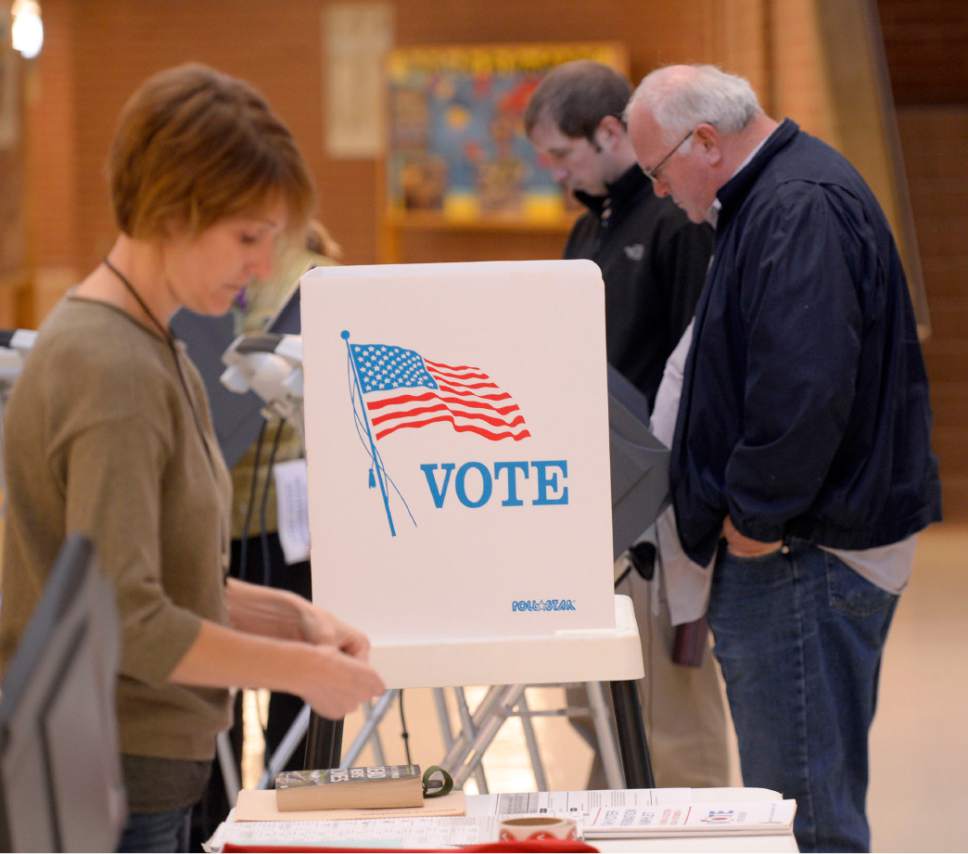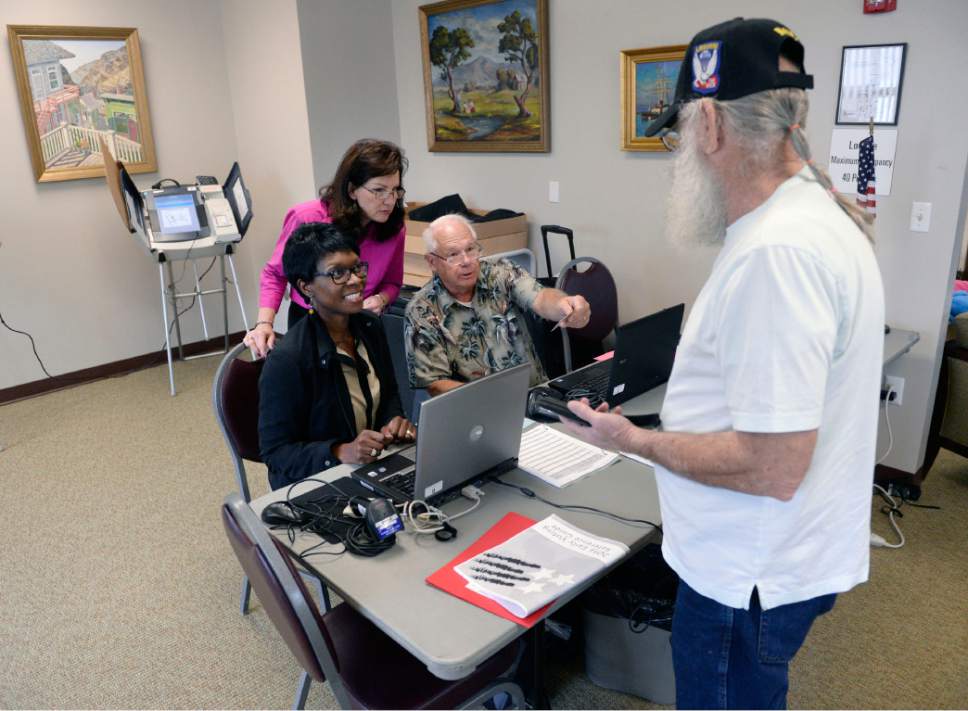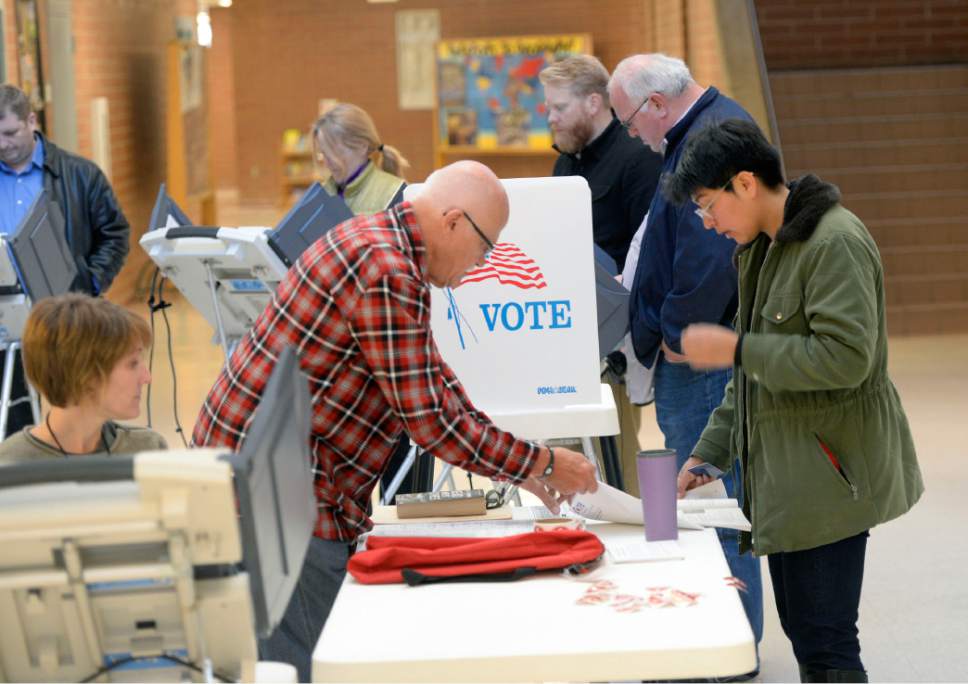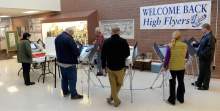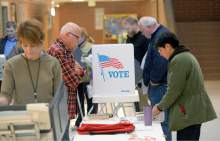This is an archived article that was published on sltrib.com in 2014, and information in the article may be outdated. It is provided only for personal research purposes and may not be reprinted.
Utah tied for the third-lowest voter turnout among the states this year — even after many counties went entirely to voting by mail to try to improve the numbers, and five counties experimented for the first time with Election Day voter registration.
Only 28.8 percent of the voting-age population actually cast ballots.
That was 577,973 voters out of the estimated 2,004,283 Utahns age 18 or older, according to the state's final voter canvass and census data.
Utah tied with New York for the third-lowest turnout. Even worse were Indiana (28 percent) and Texas (28.5 percent), according to the United States Election Project, an ongoing academic study of voter turnout.
While Utah is now near rock bottom, it once was near the top. In 1980 — a year when Ronald Reagan won in a landslide for president — 66 percent of eligible Utahns voted, fifth highest in the nation.
Just two years ago, when favorite-son Mitt Romney ran for president, Utah had a 55.4 percent turnout. But that was still 13th lowest in the nation.
Justin Lee, deputy director of state elections for Lt. Gov. Spencer Cox, sees one main reason for the low turnout: a lack of competitive races. That makes many people lose interest in elections, or figure that their votes do not matter.
"Contested races seem to make a bigger difference than any kind of voter system," Lee said. "In counties that had contested races, those really drove people to come out."
For example, he said tiny Piute County had the third-best turnout in the state, with 71 percent of active registered voters casting ballots (a measurement method the state prefers to use, instead of a percentage of eligible population).
"The county clerk told me there were some really contentious races down there, I think on the school board. And people got out for that," Lee said.
He noted the only race with statewide attention that was considered close this year was the 4th Congressional District race between Republican Mia Love and Democrat Doug Owens. It was the only "race buying real significant ad time, and that does make a difference" in turnout, he said.
—
Voting changes • Lee said that the 10 counties that converted to all-by-mail voting did seem to improve their voter turnout. For example, Wayne and Grand counties used the system to achieve 76 and 75 percent turnout, respectively, of active registered voters casting ballots, highest in the state.
"Even Davis County, which did not have anything that contentious on the ballot, had 46 percent turnout" by conducting voting entirely by mail, Lee said. "That was higher by a long shot than Utah and Weber counties," other large counties that did not do voting by mail and had turnouts of 35 and 39 percent of active registered voters, respectively.
Utah County lacked competitive races as illustrated by the fact that in nine county offices up for election not a single Democrat appeared on the ballot. Two Democrats filed in the eight county races on Weber County's ballot.
Kirk Jowers, director of the Hinckley Institute of Politics at the University of Utah, said a possible way to increase attention for non-presidential elections might be to hold races for governor in those years.
"Utah is one of just nine states that hold gubernatorial elections in presidential-election years," he said. "After presidential races, governor's races are the most likely to increase turnout. So we put ourselves at an extra disadvantage in mid-terms."
—
Measuring turnout • The state likes to measure what percentage of active registered voters cast ballots, and in the Nov. 4 election that was 46.25 percent. An "active" voter is one who has voted in recent elections.
State data show that Utah has 1,249,654 active registered voters. That is 62 percent of the eligible citizen population age 18 and older.
Five counties participated this year in a pilot program to allow residents to register and vote on Election Day. State data show 1,461 people did just that.
Jowers, who was former head of a state commission on strengthening democracy, said a top recommendation of that commission was Election Day registration. He said five of the six top-voting states use it.
He said he would like to see it adopted statewide for a true test, noting that it usually takes a few cycles for people to learn that it is available.
"Parties are trying hard to get to people who are not registered. We made an effort," Lee said. "It's difficult. We'll keep trying to reach that population."
The lieutenant governor's office said its online registration website helped 40,000 Utahns to register or update their status through the election cycle. Also, it said almost 400,000 people accessed the vote.utah.gov website to find information about polling places, candidates, sample ballots and ballot propositions.
While voters may correctly think that their vote may not mean much in many races in a state where the Republican Party dominates, it made a difference in some races.
That included three close Utah House races in Salt Lake County that Democrats thought they had won on election night, but ended up losing after all absentee and by-mail votes were counted two weeks later.
The margins in those three races were 47, 53 and 195 votes. By winning those close races, Republicans now will have a 63-12 super majority in the House — the largest margin they have had since 1967, and the second-largest since the Great Depression.


